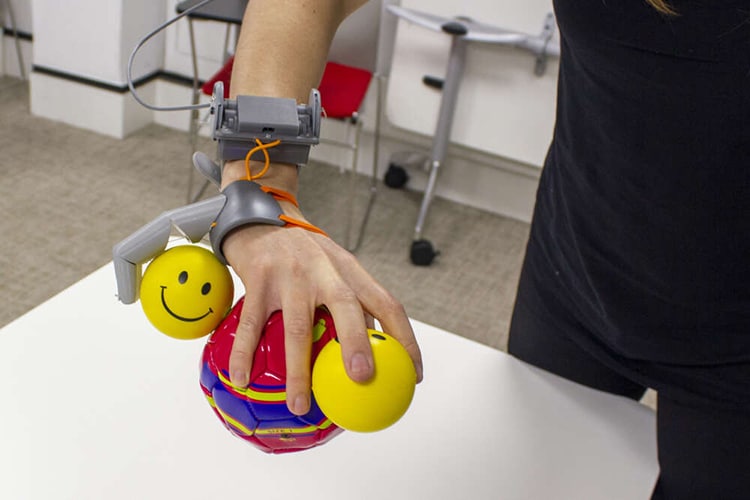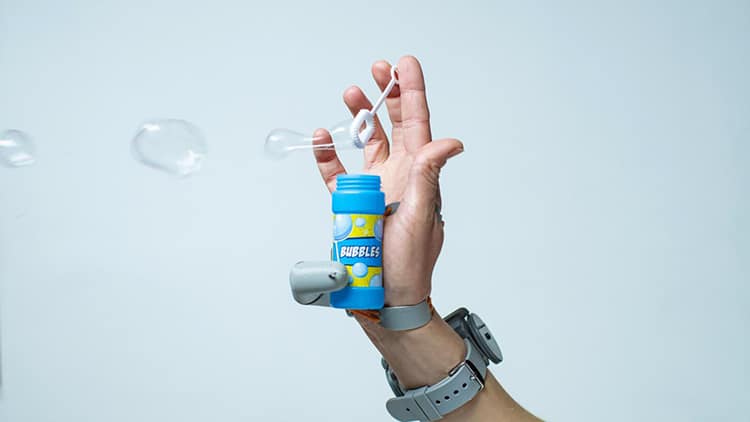Designer Dani Clode with her third thumb gadget.
If two thumbs are useful, what about a third?
They found that the human brain adapts surprisingly easily to an extra appendage.

Designer Dani Clode with her “third thumb” device. (Photo:Dani Clode)
The high tech finger is worn opposite the natural thumb, below the pinky finger.
For the experiment, 20 subjects learned to use the new thumb in a five-day training period.
Another 10 also took the training, but with an immobile prosthetic.

Using the “Third Thumb” to complete one of the training tasks, of holding multiple balls with one hand. (Photo:Dani Clode)
The training addressed how to use the robotic thumb to perform tasks in concert with the other fingers.
These tasks included picking up multiple balls or wine glasses with one hand.
Distracted tasks were even attempted, such as building with blocks while doing math.

The “Third Thumb” device being used to blow bubbles single-handedly. (Photo:Dani Clode)
In all these exercises of dexterity and coordination, the test subjects learned remarkably quickly.
Using the Third Thumb to complete one of the training tasks, of holding multiple balls with one hand.
The scans were performed without the robotic addition.
These changes in the sensorimotor cortex were subtle, the team reported.
By about a week later, the differences had largely subsided in a second scan.
These significant findings are exciting for both designers and neuroscientists.
The brain’s willing adaptation to the appendage signals important developments for prosthetic creation as well as body augmentation.
A team of designers and neuroscientists at University College London experimented with a robotic third thumb.
Participants' brains adapted quickly to the presence of another digit.
The Third Thumb machine being used to blow bubbles single-handedly.